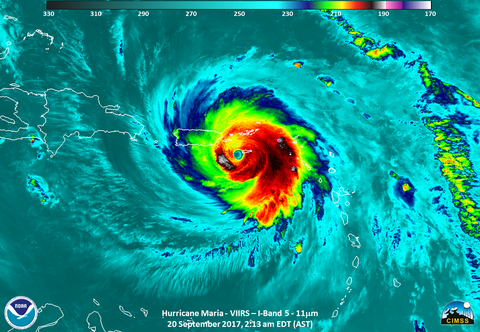Hurricane Maria
July 2025: NIST has released a video update on its study of Hurricane Maria’s impacts on Puerto Rico. See the new technical update video here.
NIST Research and Investigation

On September 20, 2017, Hurricane Maria devastated much of Puerto Rico, damaging buildings that its communities relied on for medical care, safety, communications and more. To better understand how the buildings and infrastructure failed, and how we can prevent such failures in the future across the U.S., in 2018 NIST launched a multi-year effort to study how critical buildings performed during the storm, as well as how emergency communications systems worked.
The goal of this effort is to make recommendations to improve building codes, standards and practices to make communities more resilient to hurricanes and other disasters – not just in Puerto Rico but across the U.S. NIST has a long history of studying disasters so that we can learn from them and improve our buildings or procedures. For example, after the World Trade Center disaster, NIST’s recommendations led to changes in how we build buildings and respond to emergencies. Additionally, thanks to NIST’s work studying the effects of tornadoes, building codes and communications practices have been changed to keep people safer.
In this effort, NIST seeks to understand Hurricane Maria’s wind environment and the conditions that led to injuries and deaths; how critical buildings and designated safe areas within them performed—including their dependence on electricity, water, transportation and other infrastructure; how emergency communications systems performed and the public’s response to such communications; and the impacts to, and recovery of, selected businesses, hospitals and schools, as well as the critical social functions they provide. Supported by funding from the Disaster Relief Supplemental Appropriation Act of December 2022, the NIST team has extended the Hurricane Maria Program to consider impacts of Hurricane Fiona, which struck Puerto Rico in September 2022. Observations from that event are expected to provide context and inform recommendations from the Hurricane Maria Program.
The NIST team is involving local and regional emergency management officials; building departments, transportation and other public utilities; education and healthcare officials and staff; and local, regional, and Commonwealth elected officials and civil servants as well as individuals. NIST also is coordinating its work with other federal agencies, private sector organizations, and academic institutions. Several contractors are assisting the NIST team’s engineers, sociologists, economists, meteorologists, and other researchers. Because NIST is not a regulatory agency, it does not issue new codes or standards. However, NIST will work with all relevant public and private citizens to encourage voluntary implementation of the recommendations in its final report.
Contacts
Media Contact
-
(301) 975-6343
-
ALL OTHER INQUIRIES

